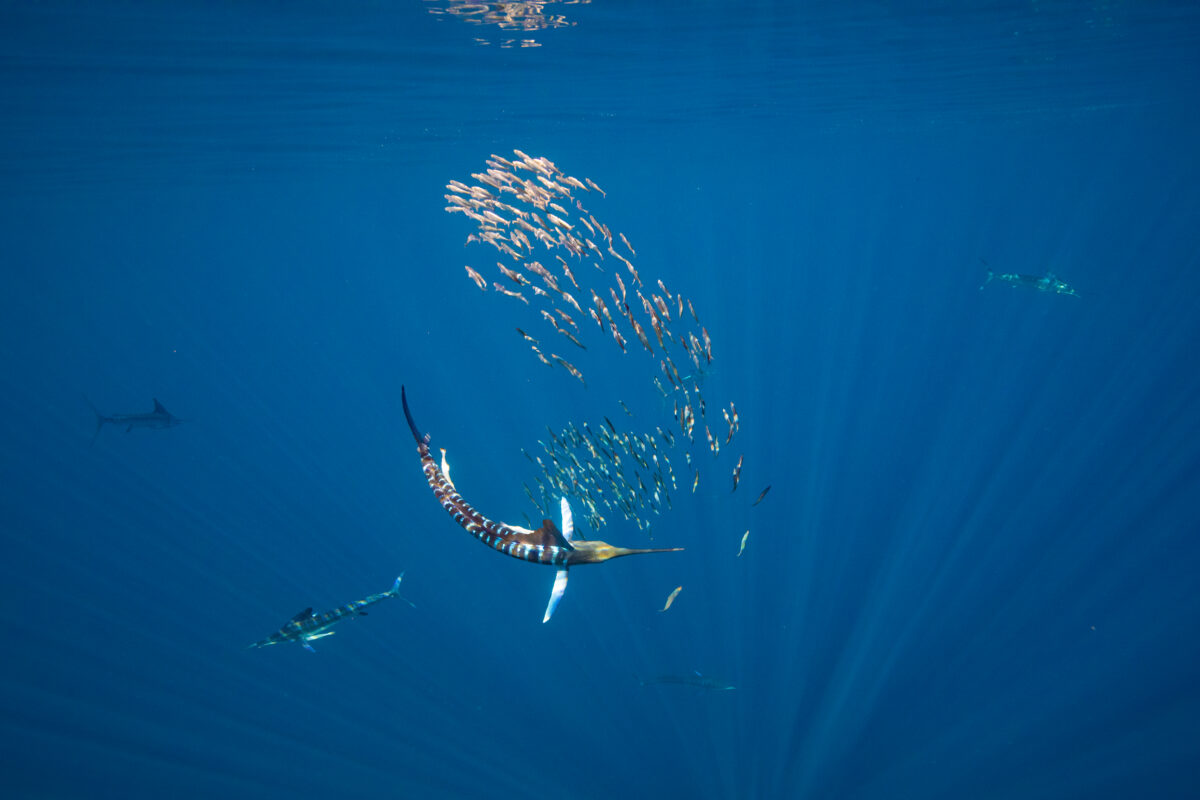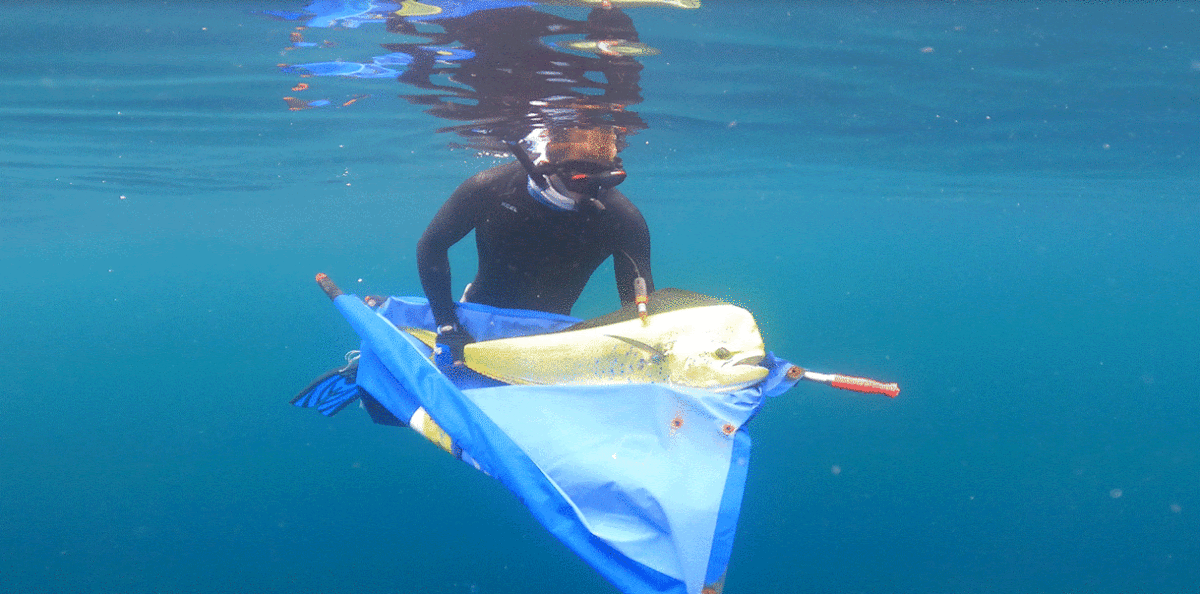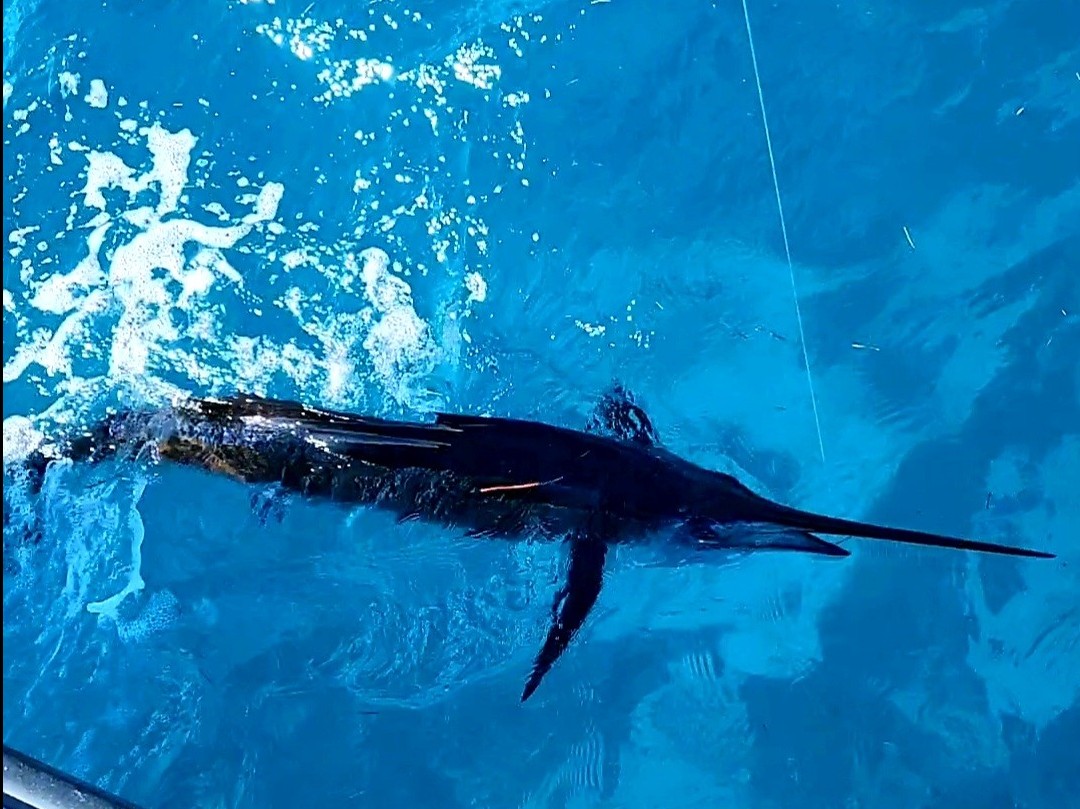Table of Contents
The Urgency of Marine Conservation
Since marine conservation began, the bottom line has been figuring out how to control fishing effort, commercial and recreational, so that we make sure we leave enough fish in the ocean for future generations and don’t wipe them out. The goals of fisheries management and satellite tagging game fish have changed over time as populations and pressures on the various fish stocks of the world have inevitably grown larger, but that primary mission still holds true.
That sounds simple enough, but like many things in life, it’s an enormously complicated task. The myriad species of fish found in the seas of the world all behave differently, with vastly different lifespans, biological profiles and behaviors. It’s impossible to develop a one-size-fits-all approach, and while they’re all different, they’re also interrelated in a complex web of life and so depend on each other in many cases for survival.
None of this mattered much back in the days when we considered the oceans infinite and rarely contemplated the possibility that we could exploit a stock of fish to the brink of extinction. But in the 1960s, the commercial fishery for bluefin tuna exploded in the northeast United States and scientists began seeing alarming numbers of both landings and dead discards. For example, purse seine boats working off Massachusetts would set their nets on huge schools of small bluefin, but sometimes sharks would attack the full nets, causing them to rip open like a nylon stocking, dumping tons of dead tuna to the bottom.
The Advent of Fish Tagging


The late scientist Frank Mather created the Atlantic Cooperative Game Fish Tagging Program at the Woods Hole Oceanographic Institute in Massachusetts in 1954, in an attempt to quantify how many fish were out there, and where they traveled to and from. He became fascinated with bluefin after watching a huge school of the great fish swim by a Woods Hole research vessel he was on, off Bimini in the Bahamas, in the 1940s. Bluefin became the primary focus of his research, although he later tagged billfish and other species as well.
Previous attempts at tagging fish had limited success. Early billfish tags weren’t tags at all, for example. They consisted of circular rubber bands that got looped over their bills, and quite often, fell off. But Mather and company refined the steel dart tag (often referred to as “spaghetti” tags), which got implanted in the shoulder of a fish with a tag stick. These tags were the norm for many years, and although they too suffered from shedding issues, typically due to poor placement, they worked quite well overall. The National Marine Fisheries Service administered the tagging program for decades, and it was later taken over by The Billfish Foundation.
The scientists of the world learned a great deal from conventional tags, including information about migration routes. Mather once tagged a bluefin off Cat Cay in the Bahamas, for instance, which was recaught 79 days later off Norway. That taught us that when you see the tunas in the summer off the Bahamas, they were merely passing through, on a mission to get somewhere else fast. Scientists also began tagging amberjacks off Florida, and everyone was shocked to learn that the big jacks traveled great distances up and down the eastern seaboard of the U.S. Everyone had assumed they basically stayed in one place year-round.
Leap Forward with Satellite Tagging Game Fish
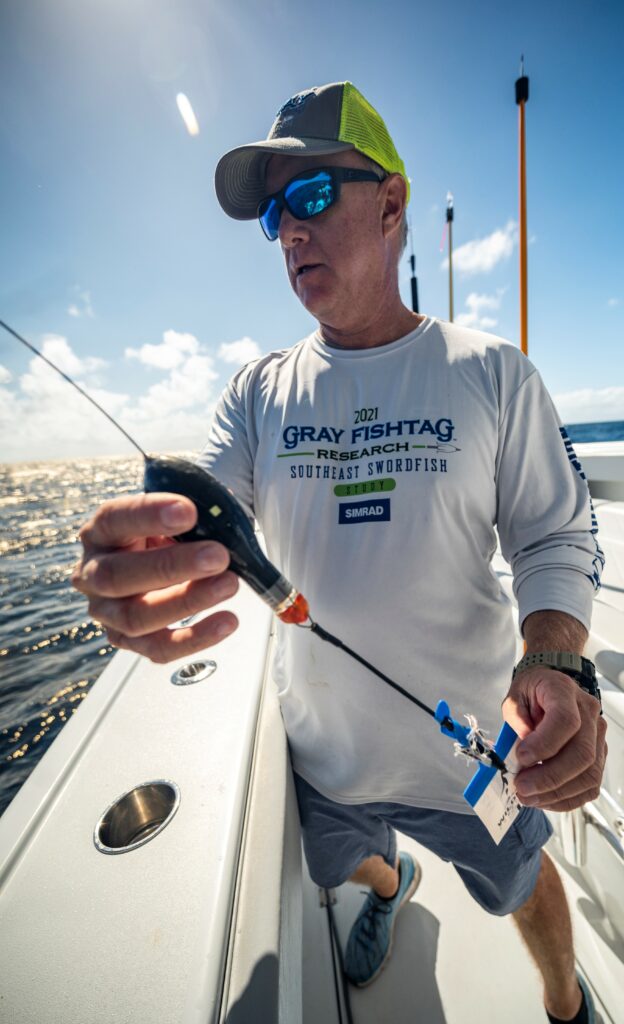
But conventional tags had definite limitations in addition to their benefits. It proved difficult if not impossible to retrieve tags from recaptured fish and retrieve their vital information, without killing the fish. In addition, length and growth data proved extremely unreliable. When anglers tagged a fish, they would estimate length and weight on the tag cards, but many times the fish would have “shrunk” when they were recaptured. Turns out people are pretty bad at estimating the weights and lengths of fish!
So as satellites began to proliferate in the sky above, some incredibly smart people began conceptualizing a way to use this technology to better track game fish. The creation of Pop-Up Satellite Archival Tags (PSATs) changed the game forever. PSATs get implanted in the fish much like conventional tags, but they contain electronic recording and transmitting components internally, which record a wealth of data about what that fish does after being tagged. These data include where the fish goes and at what level of the water column it spends most of its time. And both forms of tagging remain valuable.
“Dart tags do not have the battery challenges like some satellite tags, dart tags stay on the fish longer and provide time-at-large data, important with age and growth studies,” said Ellen Peel, President of The Billfish Foundation (TBF). “Satellite tags do not replace dart tags. Traditional tagging generally tells us about the long-term habits of billfish, satellite tagging tells us about the short-term, but some of that data can be extrapolated and applied to research questions.”
Gathering Crucial Data Through PSATs
The PSAT eventually detaches from the fish and floats to the surface where it transmits data to overhead satellites. It then bobs around like a message in a bottle, eventually winding up on a beach somewhere. If we’re lucky enough to have someone find the tag and return it to the institution it came from, we hit the motherlode in terms of information, gaining a virtually complete record of where that fish went and what it did in the days immediately after being tagged. “As a research tool, satellite tags have excited the billfishing community like nothing else since TBF began distributing dart tags in 1990,” said Peel. “Most crews are eager to assist in tag deployment, though a real commitment is needed because the cost is $5,000 per tag and expedition deployments require completion of established steps.”
“PSATs have been a real game changer in how we study billfish,” said Jason Schratwieser, President of the International Game Fish Association (IGFA). “Not only do you not need to recapture the fish to get data, but the data you get is infinitely more informative than what you get from traditional spaghetti tags. We’re able to construct tracks that display billfish migratory behavior and get insight into their diving patterns and how they utilize their vertical habitat. This technology has shown us that marlin have the capacity to travel nearly 6,000 nautical miles in 240 days and dive to depths of 800 meters.”
Expanding Research Horizons Beyond Billfish
And while bluefin tuna and billfish have been the most prominent species studied through PSAT tagging, they aren’t the only ones. In 2015, Bill Dobbelaer of Gray Taxidermy in Pompano Beach, Florida, formed Gray FishTag Research (GFR), with a mission to get charter sportfishing professionals involved with collecting relevant daily data. Dobbelaer leveraged his long-standing relationships with over 10,000 captains and mates all around the globe to gain real-time data and began the research efforts of GFR. The program allows taggers to tag any species they like, and while the program still utilizes spaghetti tags as well, it has also begun tagging several important species with PSATs.
GFR primarily focuses their satellite tagging efforts on Central American billfish, on roosterfish, and on striped bass in the northeast U.S. “The GFR program is the first to conduct long-term deployment satellite tag studies on striped bass and roosterfish,” Dobbelaer said. “The MiniPAT satellite tag is manufactured by Wildlife Computers and offers three components to collect data during the duration of deployment. It is a sophisticated combination of archival and Argos satellite technology. Our tags are programmed for a four-to-six-month duration and track the large-scale movements and behaviors of the fish. At the pre-set time or during a premature release, the tag will float to the surface to begin transmitting its stored data to Argos satellites. Our team processes the data to determine the tracking map of migration, diving behaviors and temperature preferences based upon the three sensors: Light-based geolocation, depth, and sea surface temperature.”
PSATs have greatly expanded our knowledge base on numerous species. On swordfish, for example, scientists learned that individual fish frequently and sometimes rapidly dive from near the surface, to great depths and back up again. They do this repeatedly, a behavior which shattered the belief previously held by many who thought swordfish stayed near the surface to feed all night. These new discoveries constitute the fun part about tagging in general, learning amazing new things about the mysterious fish we all love to catch.
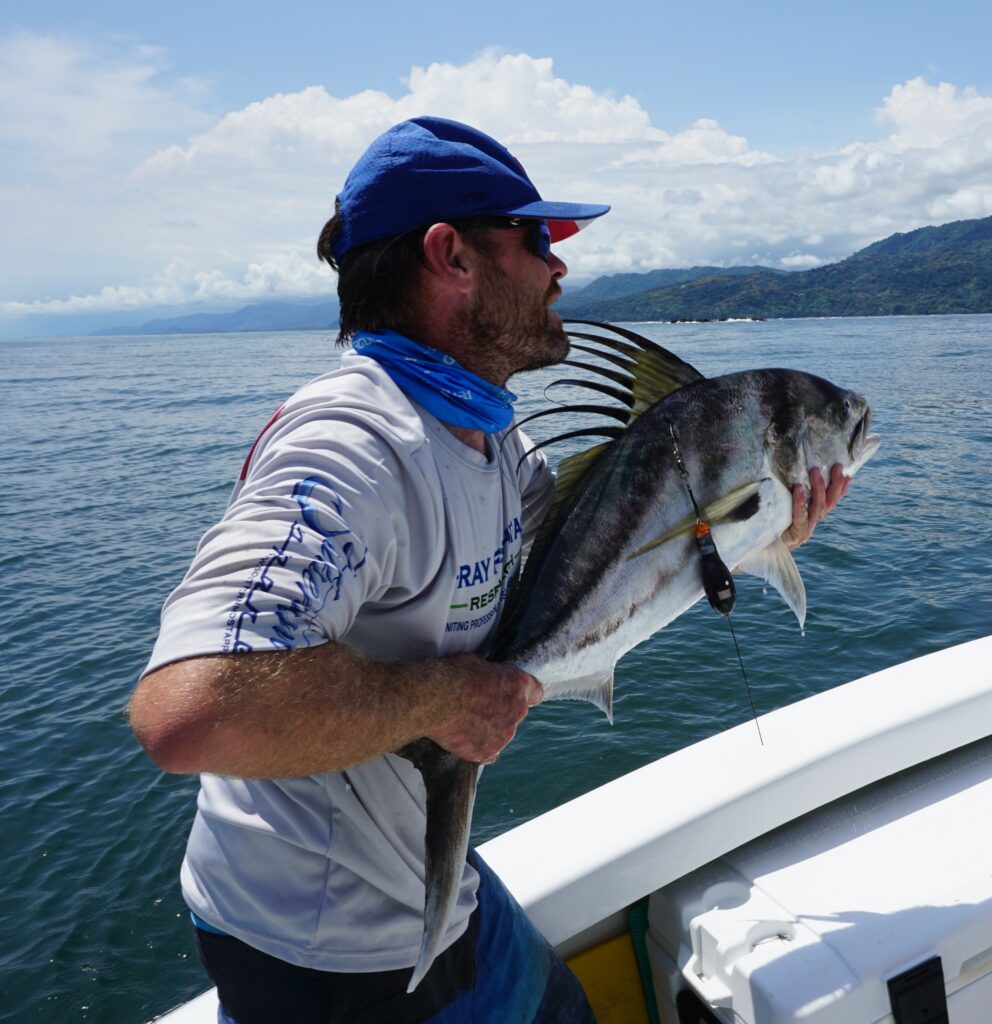
Insights and Implications for Conservation
“Many anglers believe roosterfish are territorial fish and do not migrate,” said Dobbelaer, “while others believe they use the open ocean for migration and are not necessarily restricted to the mainland shorelines. Our satellite tagging studies have shown that the fish we studied are not territorial and we have seen some incredible migrations. All the roosterfish we have studied have travelled and not stayed where they were caught and released. And with striped bass, the astonishing data showed that these fish migrated well offshore and not along the coastline, as many believed for generations.”
PSATs may also help us learn more about the much-debated topic of release mortality. Scientists constantly try to determine how many of the fish released by recreational anglers end up dying anyway. Fisheries managers grapple with this information when creating fisheries management plans because estimates of mortality, whether direct or indirect, matter a lot. And as an industry, we have come a long way in our efforts to greatly reduce release mortality, whether it’s through educating the angling public about proper fish handling and release techniques, the use of circle hooks with billfish, or the use of descending devices with snapper and grouper to minimize the effects of barotrauma.
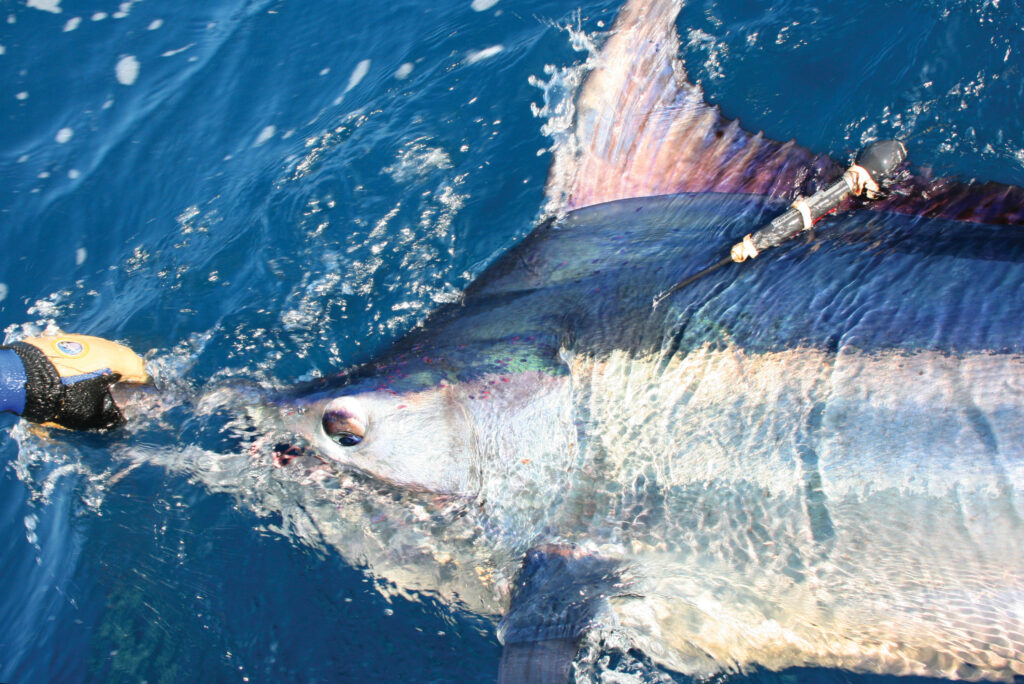
If a fish gets recaptured after tagging with a spaghetti tag, it obviously survived its encounter with the angler who tagged and released it. Likewise, if we retrieve data from a PSAT implanted in a fish, showing that it swam away, the same outcome can be assumed. Noting the relative health and condition of a released fish can be a crucial factor. Frank Mather once released a tagged white marlin in Venezuela, for example, which appeared dead to all aboard the boat, but he insisted on releasing it anyway. The fish sank slowly from sight, motionless, with blood pouring from both gills, and everyone was surprised when that same fish was recaught several months later, alive, and well. It just goes to show that you never know for sure.
A Huge Database Unfolds
Even though satellite tags are expensive, the data gained has proved to be of great interest to the generous anglers of the world who are blessed with deeper pockets, and PSAT funding has been consistent and impressive. This has led to a great many of the tags being deployed in angling hot spots around the world. “Since 2011, working with our scientific partners at Stanford University, we’ve been able to deploy over 550 satellite tags on every species of billfish except for longbill and roundscale spearfish,” said Schratwieser. “We’ve recorded over 36,000 days of activity and logged over 687,000 nautical miles of distance. This rich database has resulted in 12 peer-reviewed scientific publications investigating billfish diving and migratory behaviors, habitat loss, population connectivity, and more.” Such profoundly valuable knowledge could not possibly have been gleaned from the use of conventional dart tags alone.
“TBF’s expedition requirements to best ensure scientific credibility of collected sat tag data include deployment of a credible sample size,” added Peel, “at least six-to-eight tags, within a few days of each other, preferably with a scientist on the team after fishing team members have been trained on how to deploy tags. A scientist programs the tags before leaving the dock. Time and analysis are also time-consuming issues, once a sat tag and the Argos satellite line up and tag data is uploaded, which requires a license and a fee. Then the data is downloaded and analyzed by another scientist, which also takes time and is costly.”
So, while satellite tagging remains expensive, difficult, and imperfect, it also constitutes our best shot at preserving these magnificent fish for future generations through a better understanding of their habits. And that makes it all worth the considerable effort.
Don’t Forget to Check Out Our Sportfishing Job Board! Did You Know? It’s the perfect platform for seeking skilled captains and mates. Whether you’re on the hunt for your dream team or looking to join one, your next big adventure begins here. Explore the opportunities now! Click Here
Dive Deeper into the World of Sportfishing
Unlock Exclusive Savings: Enjoy 50% Off Your Subscription!
Are you ready to explore the thrilling world of sportfishing from the comfort of your home? Subscribe now and embark on a journey filled with captivating stories, expert insights, and insider tips. Choose between our digital or print edition and secure an incredible 50% discount on your subscription.
Subscribe today and get ready for an adventure like no other. Click here to subscribe and elevate your sportfishing experience with InTheBite Sportfishing Magazine.










